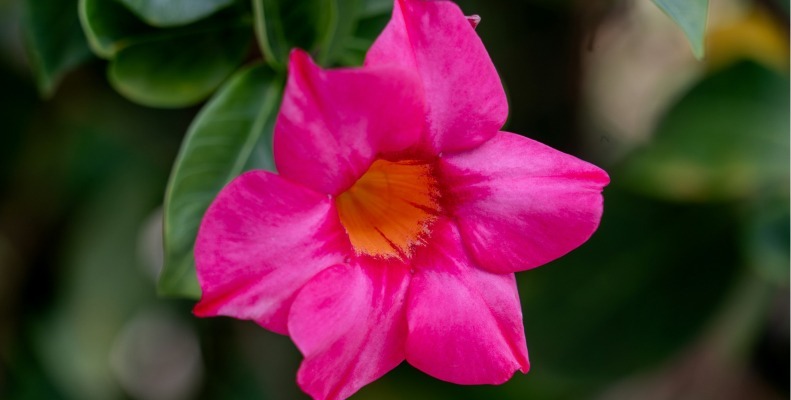Mandevilla plants, known for their lush, trumpet-shaped flowers, are tropical vines that thrive with the right care. Although commonly grown outdoors, they can also make excellent houseplants if their tropical environment is mimicked indoors. This guide will explore how to nurture mandevilla plants indoors, ensuring they remain vibrant and flowering.
Introduction to Indoor Mandevilla Care
Mandevilla, often called rock trumpet due to its large, trumpet-like flowers, originates from Central and South America. Its appealing fragrance and variety of colors—predominantly pink, red, and white—make it a popular choice for adding a touch of the tropics to home décor. Mandevilla vines are fast-growing and can be trained around windowsills or trellises, providing a lush, green backdrop indoors.
Planting Mandevilla Indoors
The best time to start your indoor mandevilla is in the spring. Ensure the plant is transitioned from any nursery settings to indoor settings gently to reduce shock. When planting, choose a large pot with ample drainage and use a sandy, well-draining potting mix to prevent root rot.
Optimal Growing Conditions
Light and Temperature
Mandevillas need plenty of bright, indirect sunlight. Place them near a window that receives light for most of the day but shield them from direct sunlight with sheer curtains. They thrive in temperatures between 68-90 degrees Fahrenheit. Avoid placing them near drafty windows or doors during the colder months.
Humidity
These plants love a humid environment. Indoor air, especially in winter, can be dry, so increasing humidity is crucial. Regular misting, a humidity tray, or a room humidifier can help meet their humidity needs.
Soil and Watering
Use a potting mix designed for succulents or add perlite to enhance drainage. Water the plant when the top inch of soil feels dry. Ensure the pot allows excess water to drain to avoid soggy soil, which can lead to root issues.
Routine Care and Maintenance
Pruning and Training
Prune your mandevilla in late winter or early spring before new growth starts. This helps maintain a manageable size and encourages blooming since mandevilla flowers on new growth. Train the vines around a support structure like a small trellis or wires to encourage vertical growth and enhance indoor aesthetics.
Fertilizing
Feed your mandevilla with a balanced, water-soluble fertilizer every two weeks during the growing season. Reduce feeding in the winter months to promote rest.
Managing Pests and Diseases
Mandevillas can be susceptible to pests such as spider mites, aphids, and mealybugs. Regular inspections and wiping the leaves with a damp cloth can prevent infestations. If pests are detected, use insecticidal soap or neem oil as safe, effective treatments.
Overwintering Mandevilla Indoors
As temperatures drop, it’s natural to bring mandevilla indoors if it’s been outside for the summer. Before bringing the plant inside, check thoroughly for pests and prune as necessary. Place the plant in a spot with adequate light and only water sparingly until spring to prevent overwatering.
Conclusion
While mandevilla plants are typically seen as outdoor plants, they can flourish indoors with proper care. By providing the right conditions—adequate light, humidity, and careful watering—you can enjoy the vibrant beauty of mandevilla flowers inside your home. This approach not only brings a tropical flair into your living space but also allows you to cultivate these stunning vines year-round. Whether you are an experienced gardener or a beginner, caring for an indoor mandevilla plant can be a rewarding endeavor.
FAQ

